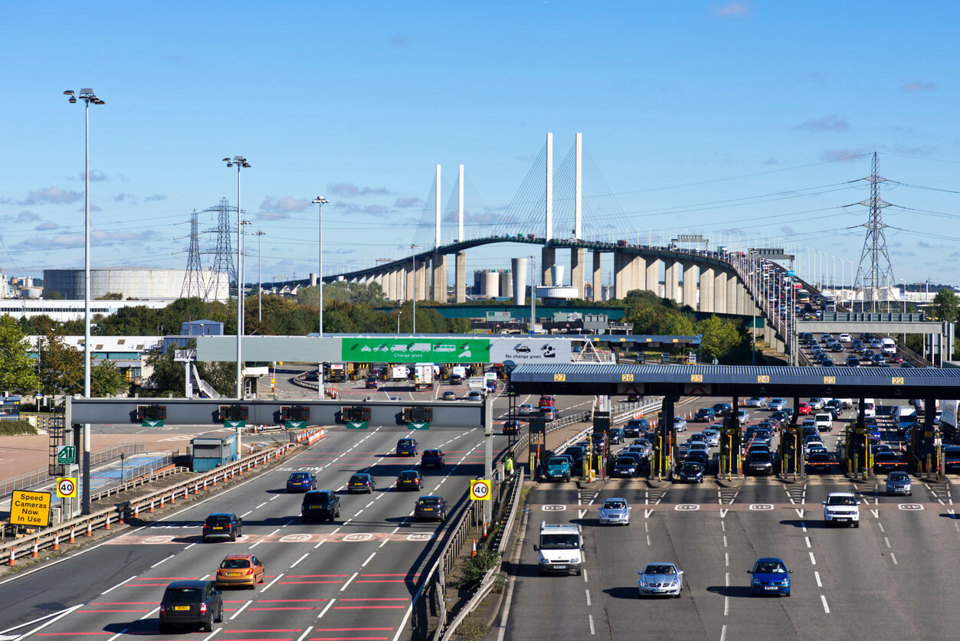The Government is being urged to forge ahead with a new multi-billion pound road link to alleviate pressure on the Dartford Crossing.
However, with its earliest anticipated opening date in 2025, the new crossing cannot come soon enough for fleets frequently facing gridlock conditions when using the Queen Elizabeth II Bridge or the Dartford Tunnel.
Highways England described the existing link as one of the least reliable sections of the UK’s strategic road network.
The Dartford Crossing was designed to cater for 135,000 vehicle movements a day, yet it regularly exceeds that figure, handling 50 million crossings a year, at an average 137,000 per day – 25% of which are heavy and light goods vehicles.
The crossing is also partially or fully closed 300 times a year and it typically takes three to five hours for the roads to clear following closure.
Richard Burnett, chief executive of the Road Haulage Association (RHA), told Commercial Fleet: “There is a desperate need to increase capacity on this route, as anyone who uses the Dartford Crossing regularly will know.
“The congestion created is a daily burden for the UK economy.”
In 2013, two locations were shortlisted for a new bridge or tunnel across the river: one near the existing Dartford Crossing and the other linking the M2 with the M25 via the A13, with a possible further link to the M20.
After assessing the shortlisted options, Highways England is recommending building a new road from the end of the M2, which will go under the Thames just east of Gravesend and Tilbury and join the M25 between junctions 29 and 30.
It will be the first new crossing of the Thames east of London since the Queen Elizabeth II Bridge opened at Dartford 25 years ago.
Malcolm Bingham, head of road network management policy at the Freight Transport Association (FTA), said: “This was the route favoured by our members when we consulted with them, and we will be having further discussions in coming weeks on the details of this latest proposal.
“The FTA urges the Government to press ahead with this much-needed scheme to increase capacity and resilience and reduce congestion at the existing river crossings.”
Estimated costs for the Lower Thames Crossing are between £4.3 billion and £5.9bn (including allowances for inflation). Highways England said user charges, like those in place at the Dartford Crossing, would be applied in line with current Government policy.
Subject to the necessary funding and planning approvals, it predicted that the new crossing would open in 2025, if publicly funded. However, if private funding were also used to meet the cost of the project, Highways England said the road would not open until 2027.
Roads minister Andrew Jones said: “The Government is committed to delivering a Lower Thames Crossing, which will increase capacity and provide better, faster journeys across the Thames.”
Once complete, it could add more than £7bn to the economy by increasing investment and business opportunities, and create more than 5,000 new jobs nationally.
Highways England senior project manager Martin Potts said: “We’ve been working hard to identify solutions that strike the best balance between improving journeys, getting value for money and managing environmental impact.”
As well as inviting comments from fleets about the recommendations, Highways England has identified three routes for the new road north of the river and two south of it.
“We welcome views on them all,” said Potts. “This consultation is your chance to have your say on a once-in-a-generation, multi-billion pound investment that will have wide-ranging effects for decades.”
The consultation runs until March 24 and a decision is expected later this year.























Login to comment
Comments
No comments have been made yet.